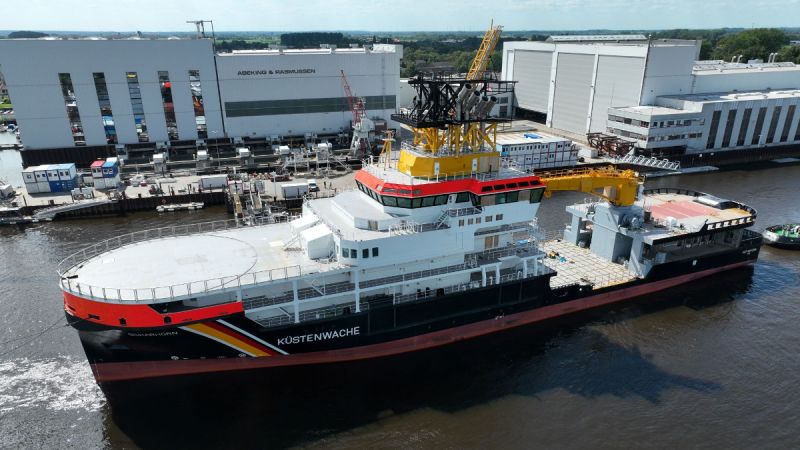Integrated bridge systems for German multi-purpose vessels

Anschütz delivers state-of-the-art navigation and bridge systems to innovative vessels.
Anschütz delivers advanced, customized integrated bridge systems (IBS) to three multi-purpose vessels for the German Waterways and Shipping Administration (WSV) built by Abeking & Rasmussen (A&R). The innovative vessels will run exclusively on liquid natural gas (LNG), with sophisticated systems supporting a wide-ranging mission profile.
“We are happy to contribute to these demanding ships with our state-of-the-art navigation systems,” said Philip Kankelfitz, head of the IBS business unit at Anschütz. “Reaching a high degree of integration and automation, our systems present clear and precise information and empower the crew to safely navigate, manoeuvre and operate the ship.”
The IBS consists of six Synapsis NX workstations with chart radar, electronic chart display and information system (ECDIS) and conning, providing advanced features for precise and safe navigation, while using another ECDIS as a planning station. The workstations integrate a fuel-efficient and precise autopilot, a maintenance-free gyro compass system and navigational sensors.
The IBS also includes a dynamic positioning system with a motion sensor to deliver a customized indication for roll and pitch in the conning display, an acoustic management system with a forward-looking sonar, an oil spill detection system integrated using the new CAT240 Asterix interface to the radar sensors and communication systems. The radars and the communications systems meet the Atmosphères Explosibles (ATEX) requirements to ensure safe use for LNG operation in hazardous environments or missions, such as firefighting.
“We design and customize systems that precisely match customer requirements and ships' mission profiles. This requires good and reliable cooperation with the shipyard,” Kankelfitz said. “We are proud that our cooperation with A&R has grown over 20 years and, today, forms the basis for demanding projects like this one.”
The first of the new vessels enters service in 2025, the second a year later and the third at the end of 2026. Approved for worldwide operations, the vessels begin operations in the German Bight. The mission profile includes work on sea marks, water policing mission, pollution control, firefighting, emergency assistance and the deployment of hydroacoustic facilities.
